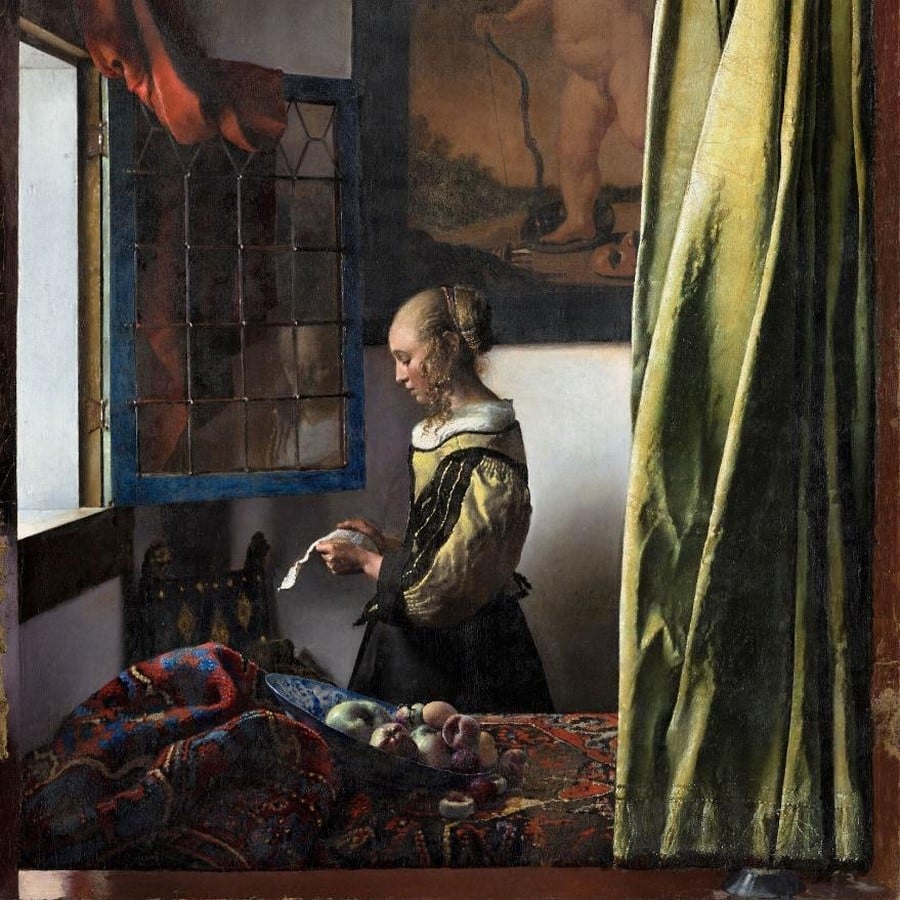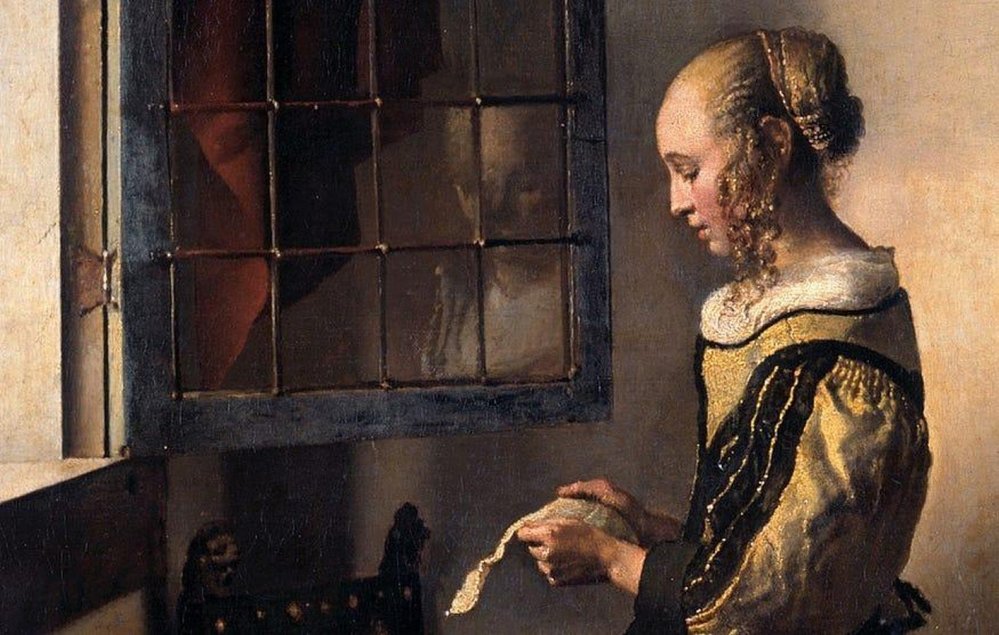The 1657 painting “Woman Reading a Letter in Yellow“ was completed by Johannes Vermeer, a Dutch painter who produced some of the most cherished and renowned pictures in art history. He was born in Delft, Netherlands, on October 31, 1632, and died there on December 16, 1675. The famous painting was once credited to Rembrandt. However, this was a regular occurrence as Vermeer’s signature was not often easy to distinguish from other works, making it difficult to determine which pieces were his own. In addition to these already existing issues, we also need to keep in mind that Vermeer left no correspondence or contracts that would have provided clarification on any given subject. In addition, hardly anything is known about Vermeer’s life.

But in 1862, the right identification was established, and Vermeer was finally credited for the painting. Vermeer frequently challenged his audience to speculate about the intentions and thoughts of the people he painted. Perhaps because his paintings captured the nuances and unresolved moments of daily life, Vermeer’s works had a persistent ambiguity that added to their attractiveness to his clients.
Vermeer’s Style
Vermeer’s skill was in examining those times in life when a person felt isolated and lost in their thoughts. His pieces are intimate invitations to halt and enjoy the scene’s peaceful closeness. He conveys recognizable yet imprecise attitudes and feelings in his figures, much like in poetry.
Rembrandt and Vermeer have been compared in terms of their style. They are incredibly different from one another, yet they also share something very unique. Vermeer’s works are brighter than his counterpart’s, which was darker. The light in this painting was placed at a specific point as it was important to train the viewer’s eyes and direct their attention. Another artwork in which light is emphasized is the “Woman with a Pearl Earring” which is a superb illustration. The light reflects off three crucial spots: the face, the lower lip of the mouth, and the earring. Although only roughly 36 of his paintings have survived, these exceptional pieces are housed in some of the biggest museums in the world. Large-scale biblical and mythical subjects were the focus of Vermeer’s early career paintings in the early 1650s, while his most well-known later works feature images of everyday life in domestic settings. These pieces stand out for their exquisite light and form, which evoke a calm, classic feeling of dignity. In addition, Vermeer created allegorical subjects and cityscapes.
Vermeer’s Painting
The painting exhibits excellent light in a well-defined landscape and its delicate light tones catch the viewer’s attention. In this artwork, a woman with a refined appearance is completely engrossed in the letter she is reading as she stands in a room corner in front of an open window. Her physical area is defined by the walls, drapes, and table; her reflection in the glass highlights the inward quality of her thoughts. Her entire universe is still. The space surrounding her is typical of Johannes Vermeer’s style: a window, a chair, and a curtain that has been intentionally pulled aside to imply a secret chamber to which we have been granted covert access. It appears as though we have silently moved the opulent green curtain to the right. Seldom did Vermeer create a painting that had a deeper significance that might be deduced from the hints that subtly adorn his pieces.


The closeness of the picture is surprising. The woman is shown reading a letter alone in a room as the outside world is displayed in front of her eyes. She simply concentrates on the letter and its contents. She is calm, unfaced by the outside world, and seems to be rejecting not just the outside but also the house, the room, and herself. She simply reads the letter which she may have been anticipating for a very long time. The woman is apprehensive and expectant, holding her breath. It is irrelevant whether the news is good or bad.

It is amusing to note that there is a picture of a Cupid beside the woman, on the wall, and behind the image. This demonstrates that is a love letter that the woman is reading. Although Cupid provides a crucial hint, we are still unsure of the young woman’s fate. Additionally, the fruits on the bed are chaotically arranged, near the tapestry, including Apples among other fruits, and a tattered braided rug on a table indicating an extramarital affair or adultery. In Dutch art, fruit frequently has deeper meanings. If the fruit is fresh, it suggests freshness, energy, and fertility. Fruit that is about to fall serves as a visual cue to viewers about the transience of life and how temporary our position in it is. The overturned fruit bowl in this picture suggests that there has been a disturbance in the home.
Oddly, the window is open. The glass panels reflect and somewhat distort the women’s faces within the glass. A portion of her face that is hidden from our view is briefly shown. It is difficult to exaggerate how brilliant this portion of the painting is; Vermeer has employed the reflections in the glass to portray the young woman’s secret side’s dismay. Regarding the letter that captures the women’s interest, letters are typically associated with romantic themes in Dutch art traditions. These paintings, classified as “genre” paintings, were meant to provide the audience that purchases art with a window into the lives of common people and a reflection of their worries and anxieties.
Reference list:
“WOMAN READING a LETTER by an OPEN WINDOW by Johannes Vermeer.” Www.essentialvermeer.com, www.essentialvermeer.com/catalogue/woman_reading_a_letter_by_an_open_window.html
“Woman Reading a Letter by an Open Window.” Johannes Vermeer’s Influence and Inspiration, Johannes Vermeer’s influence and inspiration, 23 May 2009, vermeer0708.wordpress.com/a-woman-reading-a-letter-by-an-open-window/
Jones, Christopher P. “A Painting Restored, a New Meaning Revealed.” Medium, 1 Dec. 2023, christopherpjones.medium.com/a-painting-restored-a-new-meaning-revealed-d1d7456fe3f9. Accessed 8 Feb. 2024.
Wheelock, Arthur K. “Johannes Vermeer | Biography, Art, & Facts.” Encyclopedia Britannica, 31 Jan. 2019, www.britannica.com/biography/Johannes-Vermeer.















